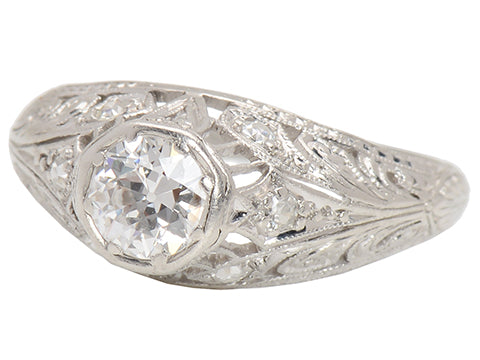
What is the mark that you see on jewelry, "Irid Plat"?
Since about 1900, platinum has dominated the making and manufacturing of jewelry. With its partner, white gold, it can be found in a wide variety of jewelry, from rings to earrings.
Its discovery ushered in the Edwardian era, known for its exceptionally fine yet durable lace-like platinum work. As with most metals for jewelry, they are often combined with other metals to help the metalsmith or jeweler accomplish their feats of wonder. Termed an alloy, it is simply two or more metals brought together.
Often another white precious metal known as iridium is combined with platinum. It is exceedingly rare and hard and has a high melting point. The higher the melting point, the more difficult it is to work with, since melting metal and reshaping it is what jewelry construction and design is all about.
Why combine iridium with platinum? It gives platinum an even harder-wearing durability. Usually jewelry and rings are often 10% iridium and 90% platinum. Hallmarks that you may find are Irid Plat, 10 Irid 90 Plat, 100 Irid 900 Plat, 10% Irid 90% Plat, or other variations. Just a few examples are shown below.


It is a preferred fine metal, for it never tarnishes or changes color or hue. As to durability, it can last a lifetime and beyond and certainly highlights the whiteness of diamonds or the rainbow colors of many precious gemstones.